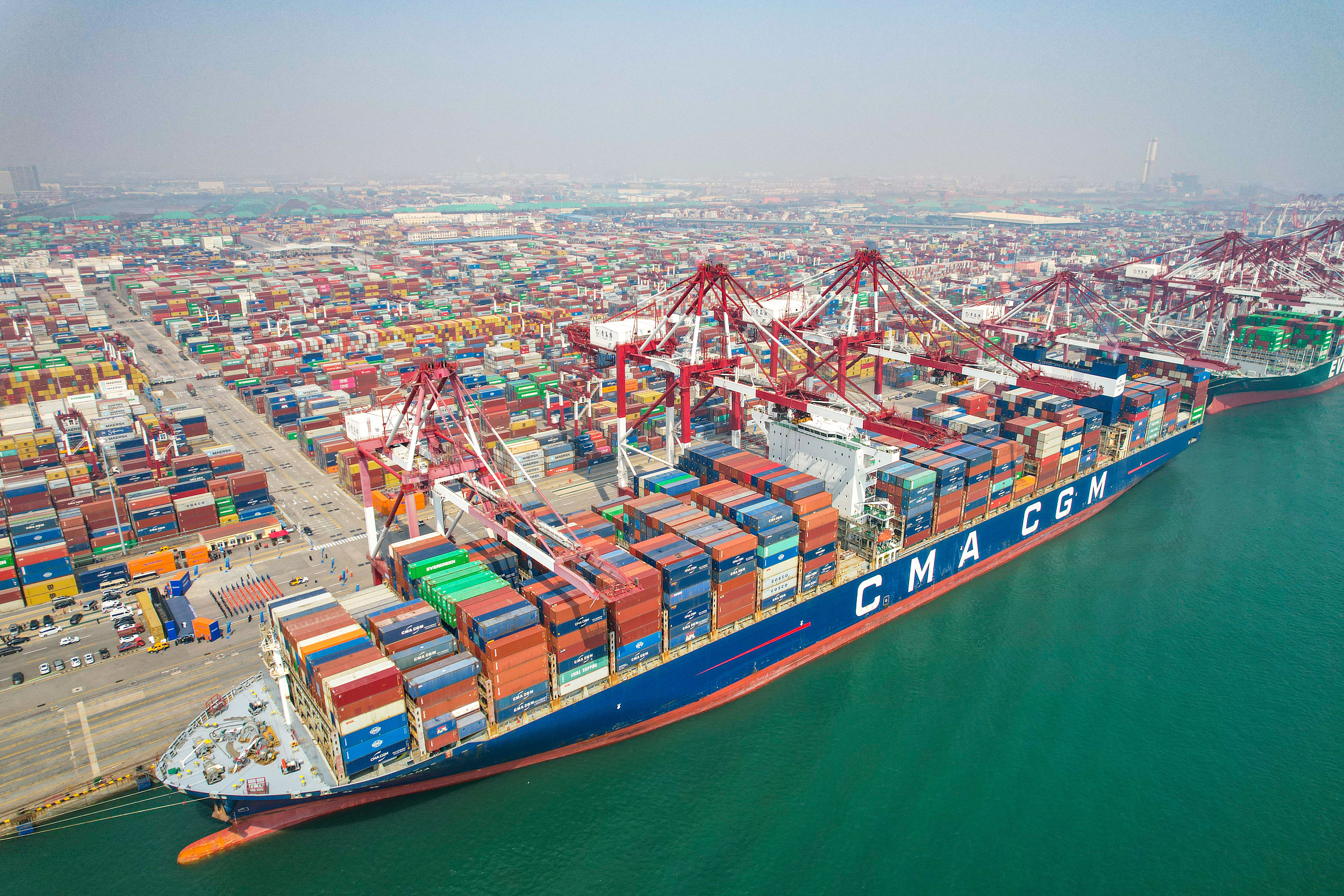U.S. Attempts to Shift Supply Chains Facing Defeat

A view of Qingdao port in China's Shandong province. (PHOTO: VCG)
U.S. manufacturers Adam and Amy Fazackerley shifted production of their drawstring organizers for cosmetics to Cambodia from China in 2019. This was in response to U.S. tariffs aimed at curbing Chinese imports. A few years later, they have begun to move their operation back to China.
Their imports from Cambodia now face tariffs as well, eating up any profits their company makes. The shipping costs in China and its unmatched ability to manufacture large numbers of products quickly mean they can't afford not to go back.
"We are a small business. We try not to complain, we try to adapt," said Adam Fazackerley. By moving manufacturing away from China, he and his wife believed they were doing what successive U.S. administrations and Congress had signaled they wanted. "And you screwed us," he said.
When it comes to the second quarter of this year, more and more U.S. manufacturers are moving back to China, as the renewal of the Generalized System of Preferences (GSP) has delayed for around three years. According to The Wall Street Journal, the GSP program has expired more than a dozen times since it came into force in 1975, but has usually been swiftly renewed.
This time, the renewal, which should be in 2020, has been complicated by political wrangling over how to decide which countries should be eligible for GSP benefits, as well as procedural hurdles linked to broader disagreements in Congress over trade and China. The root cause of this phenomenon is that the U.S. has put "counter China" as its core purpose, even at the expense of its own development and the well-being of the American people.
"The economic conflict between the U.S. and China is more of a tech war than a trade war," said David Dollar, a senior fellow at Brookings. As America's tech crackdown on China intensifies, the scope of the fallout is snowballing.
According to South China Morning Post on March 1, the "re-shoring" campaign waged in recent years to bring manufacturing jobs back to the U.S. from China is largely ineffective, and a related "near-shoring" bid to shift production to Mexico and Canada, away from America's economic rival, has yet to yield dividends.
Although some American lawmakers and corporations call for a U.S.-China "decoupling" of trade flows, this is easier said than done, wrote Dollar, whether from China to North America, or from China to other Asian countries.
In view of this, the U.S. lawmakers should reverse their thinking, and put aside the unilateralism. Compared with the containment on China at all costs, U.S. government should focus on self-development issues.


